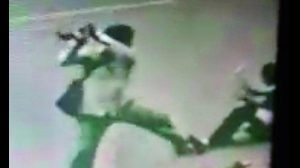Awaiting for Justice Since 2018
Summary:
Amit Bhongade is a social activist and student. He was also a victim of a racist attack on January 1 2018, in Maharashtra. He suffered severe head injuries, which resulted in speech impairment. Though he can speak, he stammers heavily. As he was a victim of the caste-biased attack, he rightfully demanded compensation from the government. More than Two years have passed, and the government has not taken any positive steps to help and rehabilitate him.
Background:
Amit Bhongade comes from a remote village in Digraj block of Yavatmal District. He is from a humble economic background and belongs to a scheduled caste community. He lost his father and mother very early and was brought up by his uncle and aunty since childhood. Both his uncle and aunty are working as agricultural labourers. Amit was about to appear for the third-year commerce final examination when he suffered this injury in the attack.
He is socially active and took the lead in college activities. He is a member of the social organisation “Samata Sainik Dal”, which works for youth development and awareness. He participated in a march conducted by Samata Sainik Dal on January 1 2017, at Bhima Koregaon, District Pune, Maharashtra, India. There was a massive gathering on the occasion of “Shaurya Diwas” (victory day). The marginalised castes, especially the scheduled castes, celebrate it as victory day due to historical reasons.
Shaurya Diwas – Victorious Day –
A Brief History of Bhima Koregaon:
It is important to note that the battle of Bhima-Koregaon is historic in many aspects. On January 1, 1818, the disciplined and organised army of 500 so-called untouchables (Mahars by caste) defeated the 28,000 well-equipped armies of the Peshwa-Brahmins. The Mahars (now renounced Hinduism and converted to Buddhism), some other marginalised castes, and the British officers defeated what can be considered the inhuman draconian casteist rule of the Peshwas. The army of Peshwa was well trained with a large force of 20,000 horses and 8,000 infantry of Peshwa Baji Rao II. A small party of 500 tired men fought without rest and respite. The names of the 21 Mahars who died in the battle were etched on the war monument. The memory of fighting today became a matter of pride for Bahujans. The Peshwa-Brahmin rulers imposed the worst possible conditions on the lower castes, especially the so-called untouchables.
Racist attack on peaceful assembly:
This year marked the 200th anniversary of the battle, imputing cultural and political assertion as lakhs of people visited the war monument, revitalising the dignity by destroying the inequality perpetuated by Peshawa Brahmins. It brought together more than one million people from across the country. There were people from Telangana, Andhra Pradesh, Rajasthan, Uttar Pradesh, Bihar, and other parts of the country. The present context is vital as the untouchables of the past all over India are asserting, and the symbol of their assertion is the Bhima-Koregaon battle as the decisive point in their history of liberation. The history of Bhima-Koregaon gives them confidence that they can quickly come out of the manufactured inferiority imposed on them by the Brahmanical socio-religious system. That caste is the root of all problems expressed by the Bhima-Koregaon battle.
Despite celebrating 200 years of the historical battle, the arrangements made by the state administration were inferior. If this toil was not enough, the caste Hindus instigated by right-wing forces pelted stones at the innocent people by raising saffron flags. They set vehicles on fire and created an atmosphere of fear among the people. There was an atmosphere of fear and violence. The crowd remained undeterred and non-violent. The attack seemed to have been planned. Only after the Brahmanical Hindutva forces instigated this fearsome violence did the Dalits take to the streets to protest.
Amit Bhongade was injured by one of the racist groups, which was pelting stones on vehicles.
Amit survived but….
As Amit suffered head injuries, there was a risk to his life. But he survived it with major physical issues. After two months of treatment, he was sent back home. In his remote village in the district of Yawatmal, he has no reasonable access to healthcare. He demanded compensation, but he was given riot relief of just Rs. 5000.00. He tried to file an FIR, but it was finally filed only at the end of May ’18, nearly five months after the incident. Police kept neglecting his repeated request to file an FIR (First Information Report- complaint). Police gave the reason they did not file an FIR as Amit could not speak. Again, the FIR Schedule, castes and Schedule Tribes (Prevention of) Atrocities Act 1989 was not applied. Section 307 (attempt to murder) of the Indian Penal Code was also not involved despite the severe injuries suffered by Amit.
More than two years have passed, but state and district administrations have not taken concrete steps to support Amit. There was almost a month-long protest by social organisation Republican Bharat demanding justice for Amit and other victims of the said attack. Pune District administration agreed to support Amit. They assured to give him financial assistance and guaranteed that the demand for the victim’s job (Amit) would be considered positively. Six months after this assurance, the Pune District administration communicated that it could not help Amit. In other words, neither perpetrators were punished, nor victims like Amit received support from the government.
– by Mr Kapil Shivsharan,






